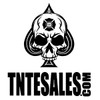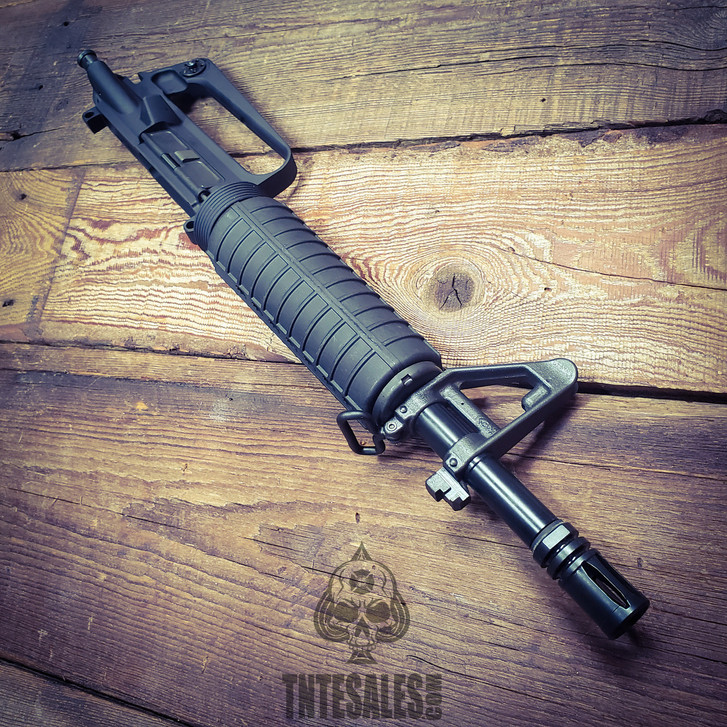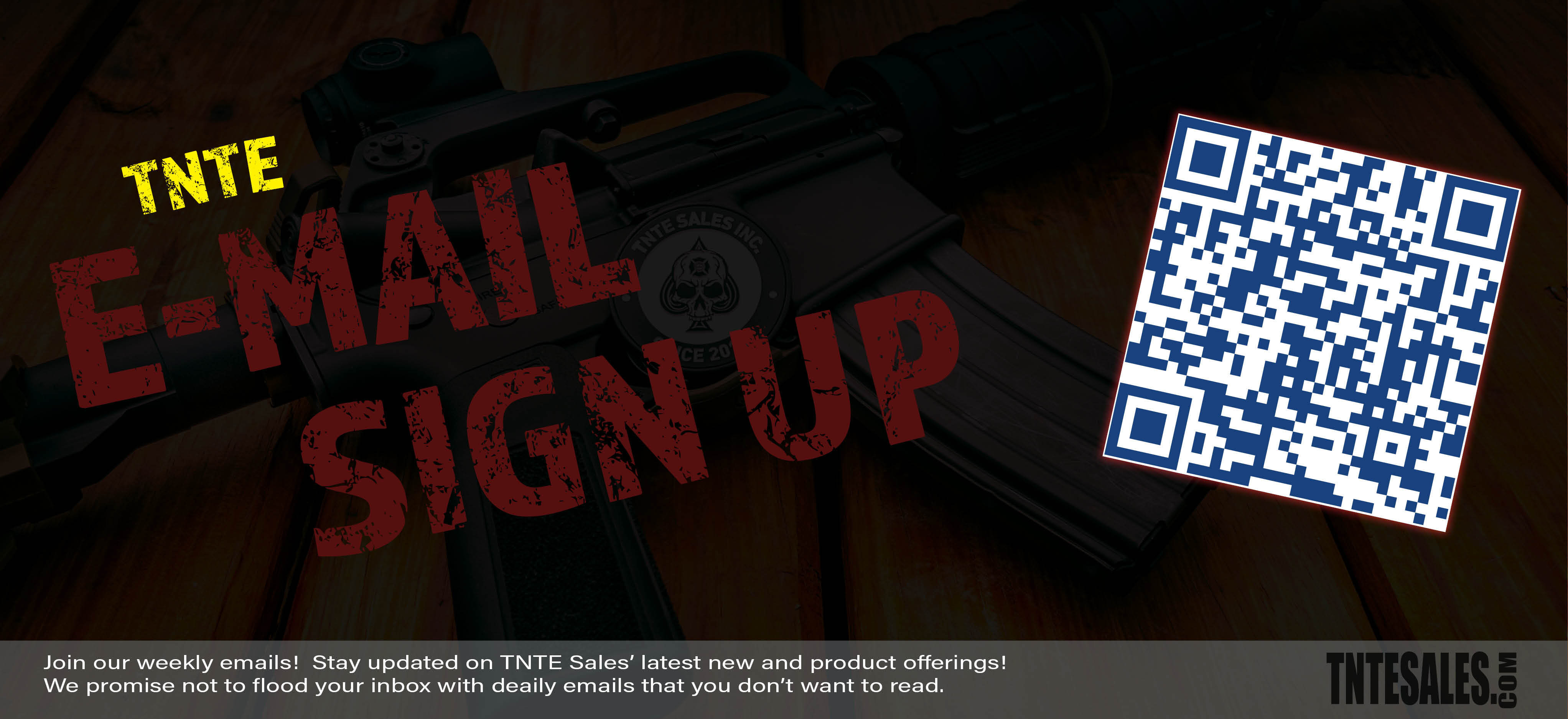Which is better? Chrome-lined or QPQ Nitride-treated?
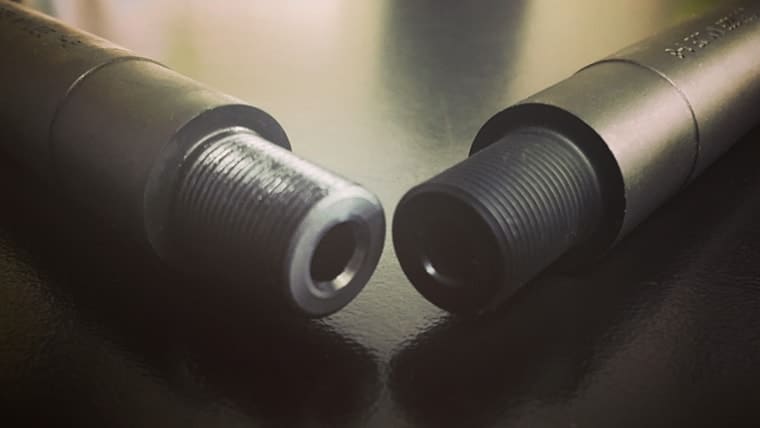
It’s a great question. We use both options depending on the barrel and its intended usage.
For the general consumer, pro-shooter, and even many military applications, Nitride is sometimes a better option. It’s the ideal blend of performance, accuracy, and practicality for shooters.
What is the Difference Between the Two Processes?
Chrome Lining
Chrome lining a barrel is an additive process. Typically, a barrel is submerged into a liquid solution and an anode is run through the barrel. When electrically charged, the chrome then bonds to the inside of the bore, adding material to the bore. Sometimes, an electro-polishing operation is used on the inside of the bore to remove material before chrome is added. Chrome is typically a few thousandths thick, though can be additionally plated for extreme applications.
Chrome has excellent corrosion and abrasion resistant properties, but only coats the inside of the barrel. To protect the outside of the barrel, a phosphate coating is typically added. MIL-SPEC is manganese phosphate, which requires oil to provide excellent corrosion resistance on the outside of the barrel. Mag phos typically has a matte grey finish.
Nitride
Instead of adding material to the bore (like Chrome lining), Nitride treats the existing steel by imbuing nitrogen into the steel itself. This is done through a gaseous plasma or a liquid salt-bath and there are various nitrocarburization processes depending on the technical need. We sometimes use the liquid salt bath Quench, Polish, Quench (QPQ) method. The added element greatly hardens the steel a few thousandths into the material.
As a treatment, Nitride does not add any materials to the bore, rather it treats the bore as it came from the factory. Like Chrome, the treatment greatly increases corrosion and abrasion resistance. Nitride treats both the inside and the outside of the barrel and does not require any oils to provide the best corrosion protection. As a final step, nitrided barrels are treated with a black oxide finish and can be high gloss or matte depending on the blasting process prior to black oxide.
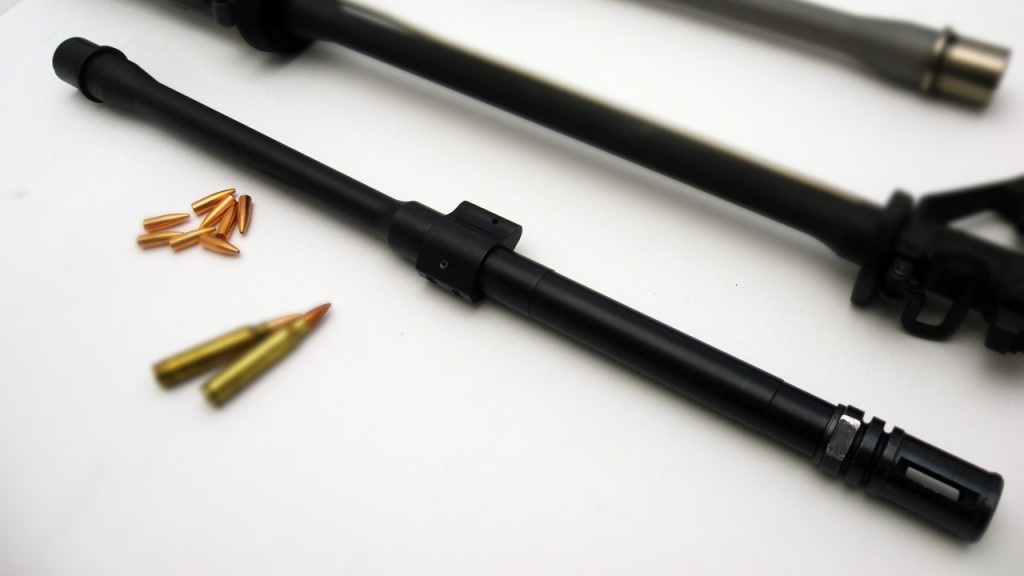
Which is more accurate?
Both can be precise but all things being equal, Nitride will always be more accurate . Nitride “locks in” the bore. Chrome will add material to it. Chrome providers have gotten very good at this over the years. The adhesion of chrome is not perfect and there will be a small degradation in accuracy, though it may not be noticed. This is mitigated somewhat by electropolishing, but one cannot perfectly plate chrome.
Which will give me a longer barrel life?
Assuming both are 4150 steels and fired semi-auto (even spirited semi auto), we have found both have very similar round counts before we see degradation of accuracy. If firing cyclic full-auto fire through extreme duty cycles, chrome will have an advantage.
Which has better corrosion resistance?
Nitride, but given enough time and exposure, Nitride will corrode as well. Nitriding barrels provides a massive gain in corrosion resistance, but no process is 100% rust-proof. We recommend the barrel is cleaned and dried as needed. A little oil doesn’t hurt either.
What About Stainless Steel?
Stainless steel can easily be nitrided, but it is very difficult to add chrome to stainless steel. Nitride significantly increases the barrel life and corrosion resistance of “stainless”.
